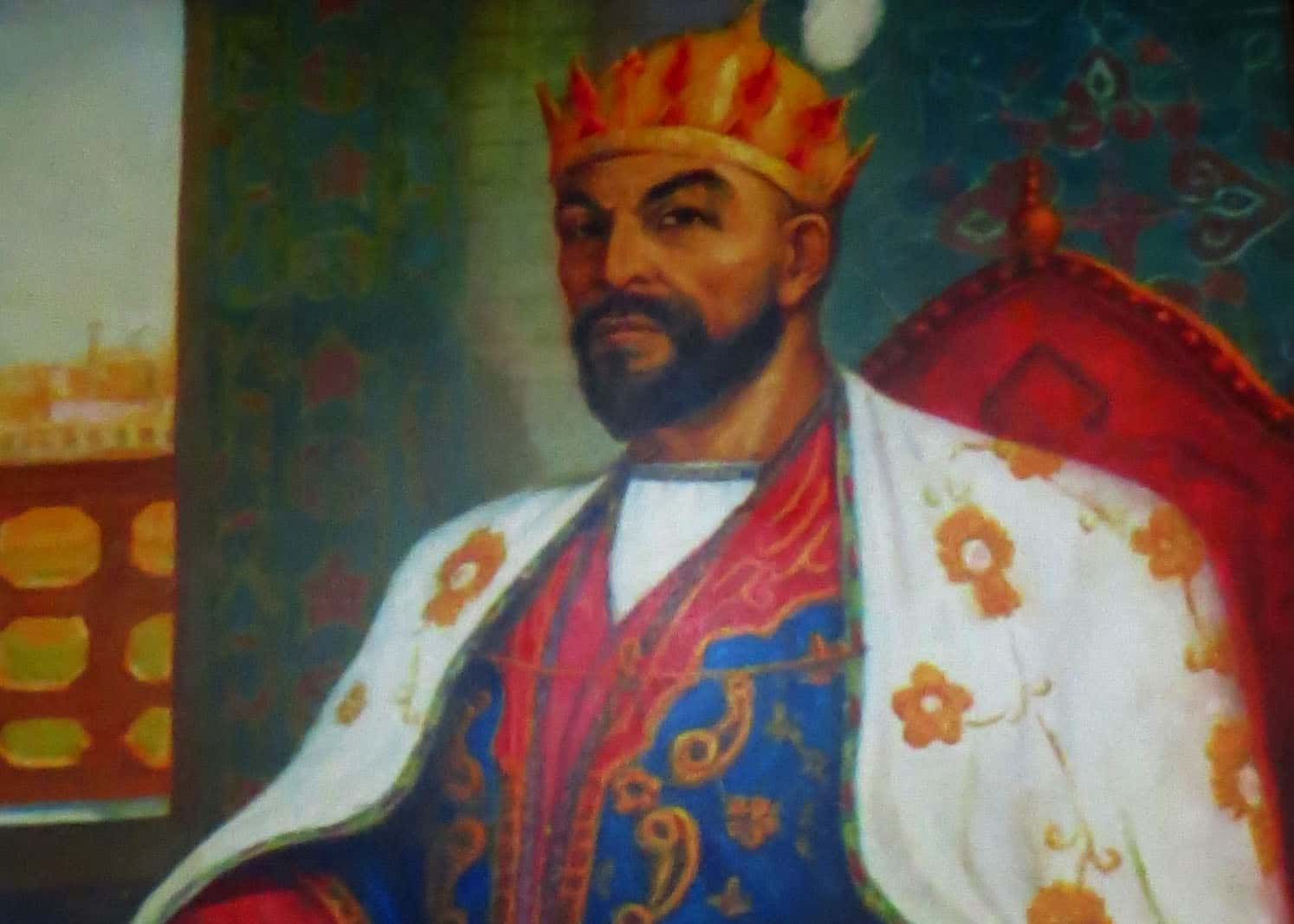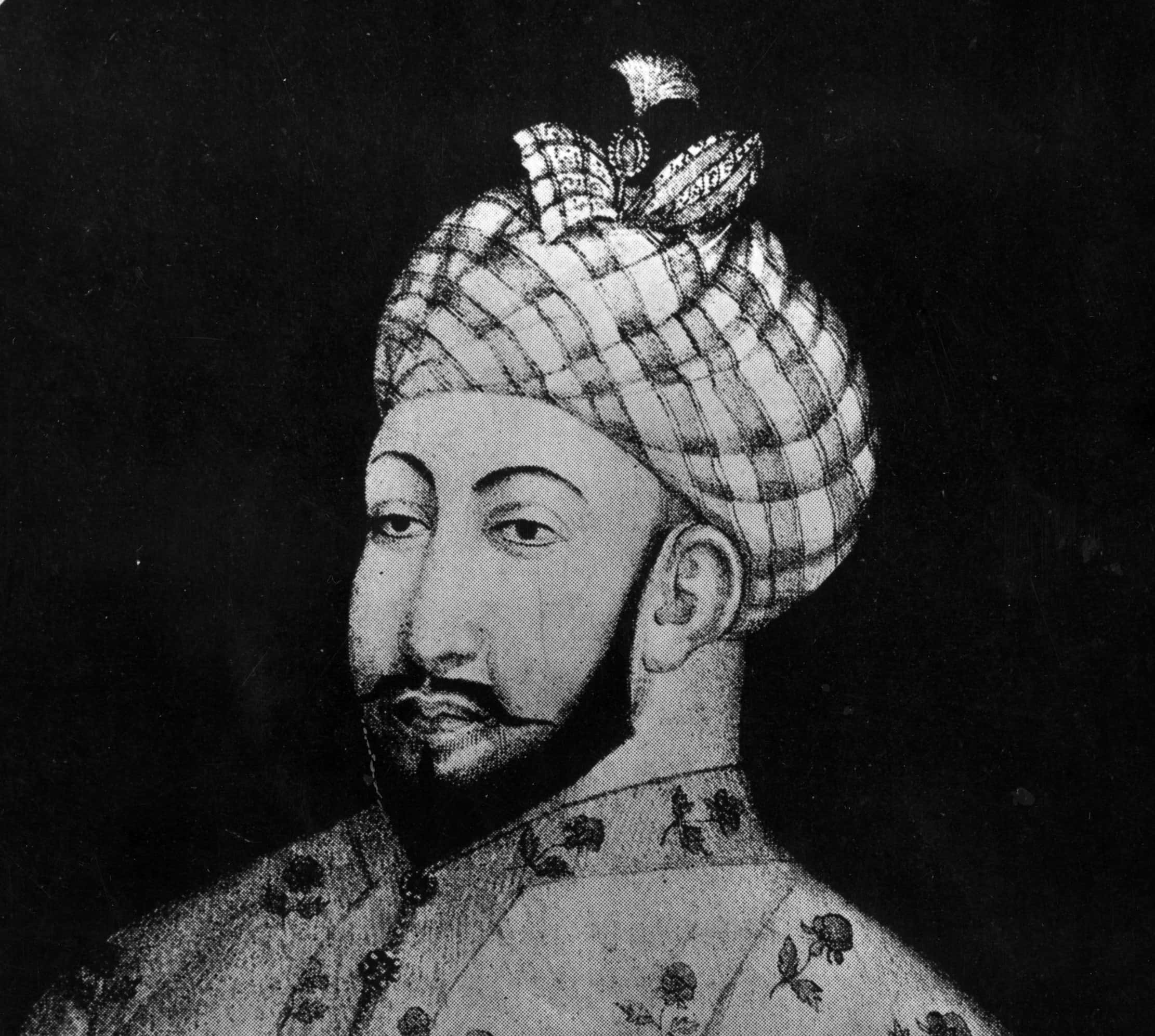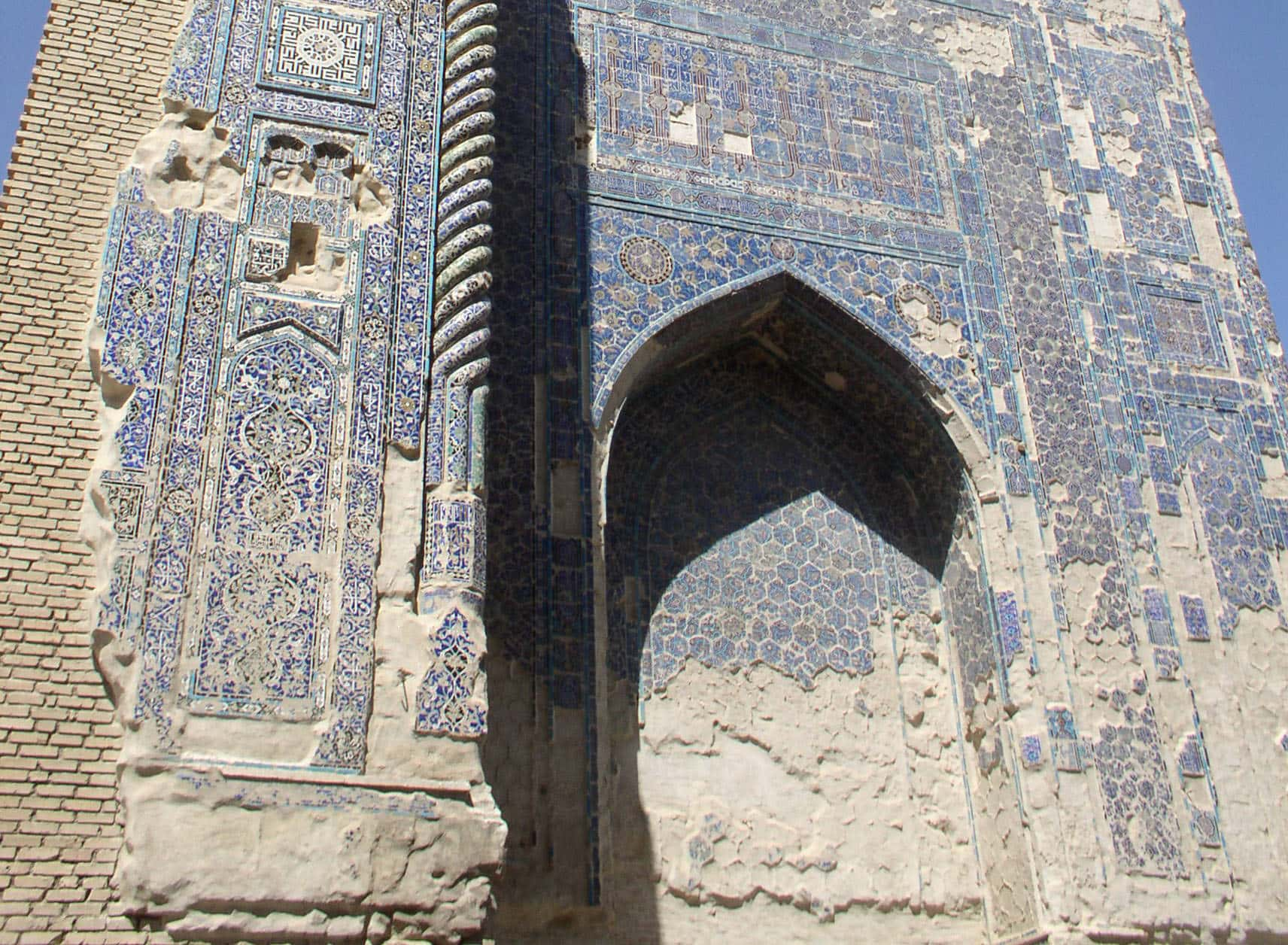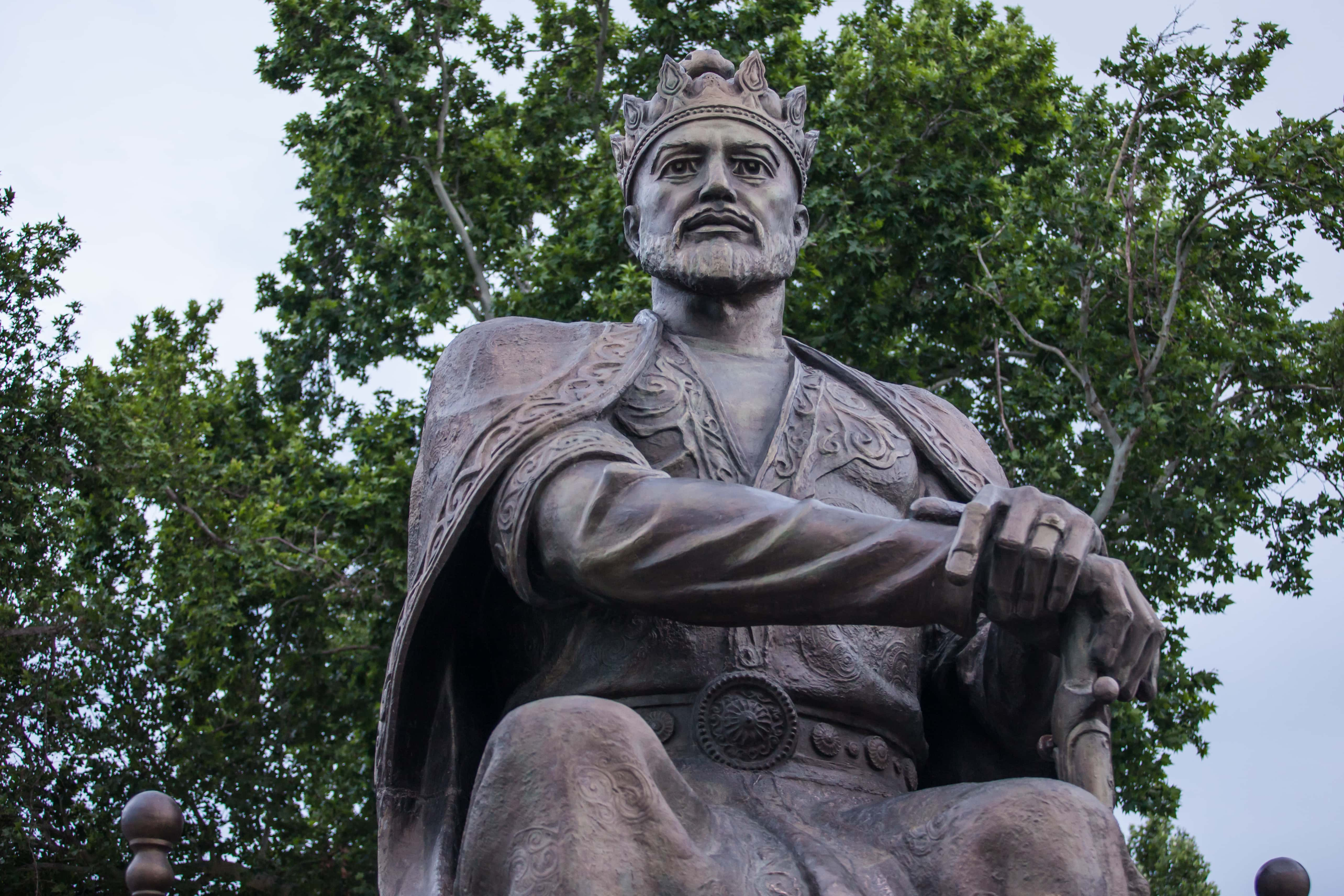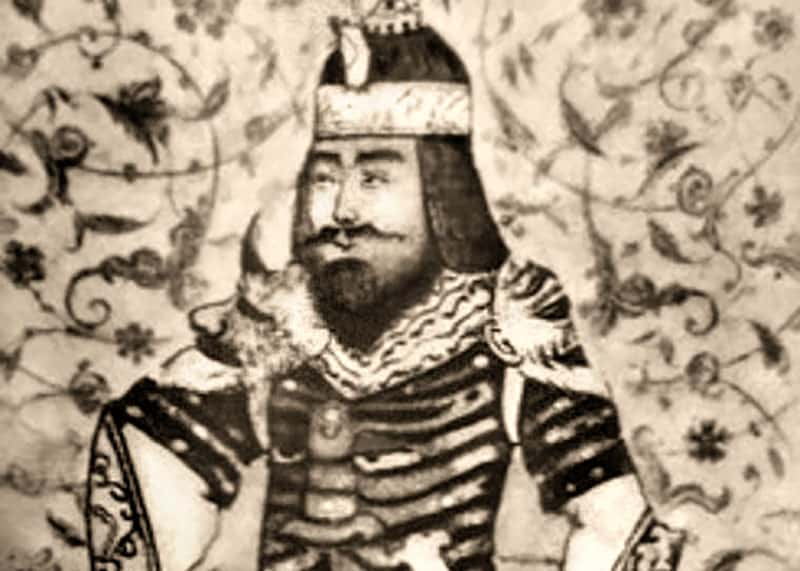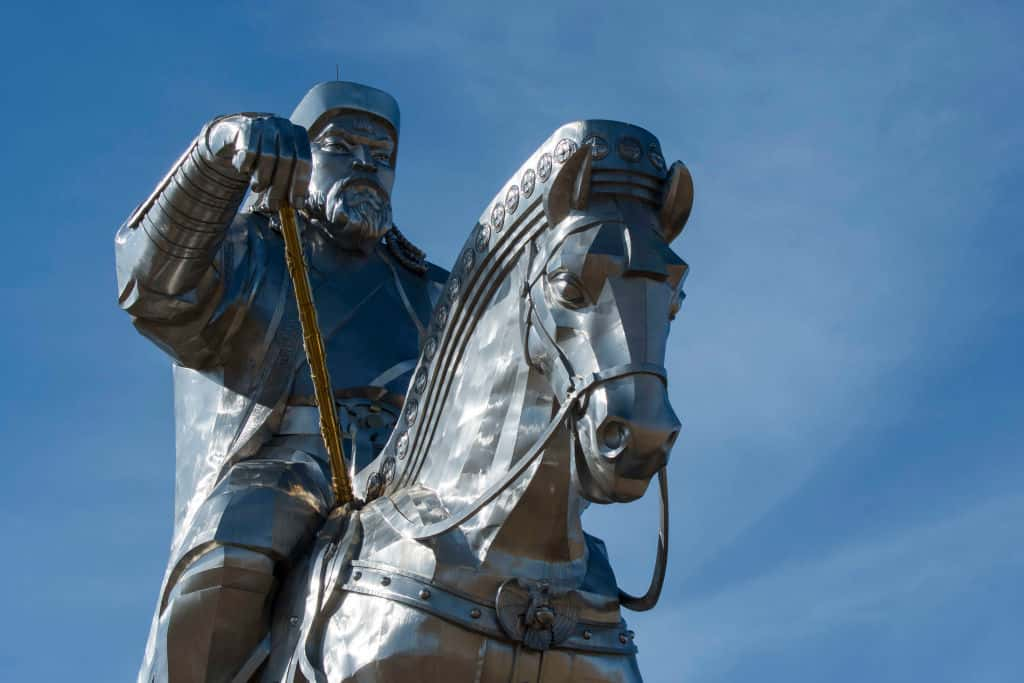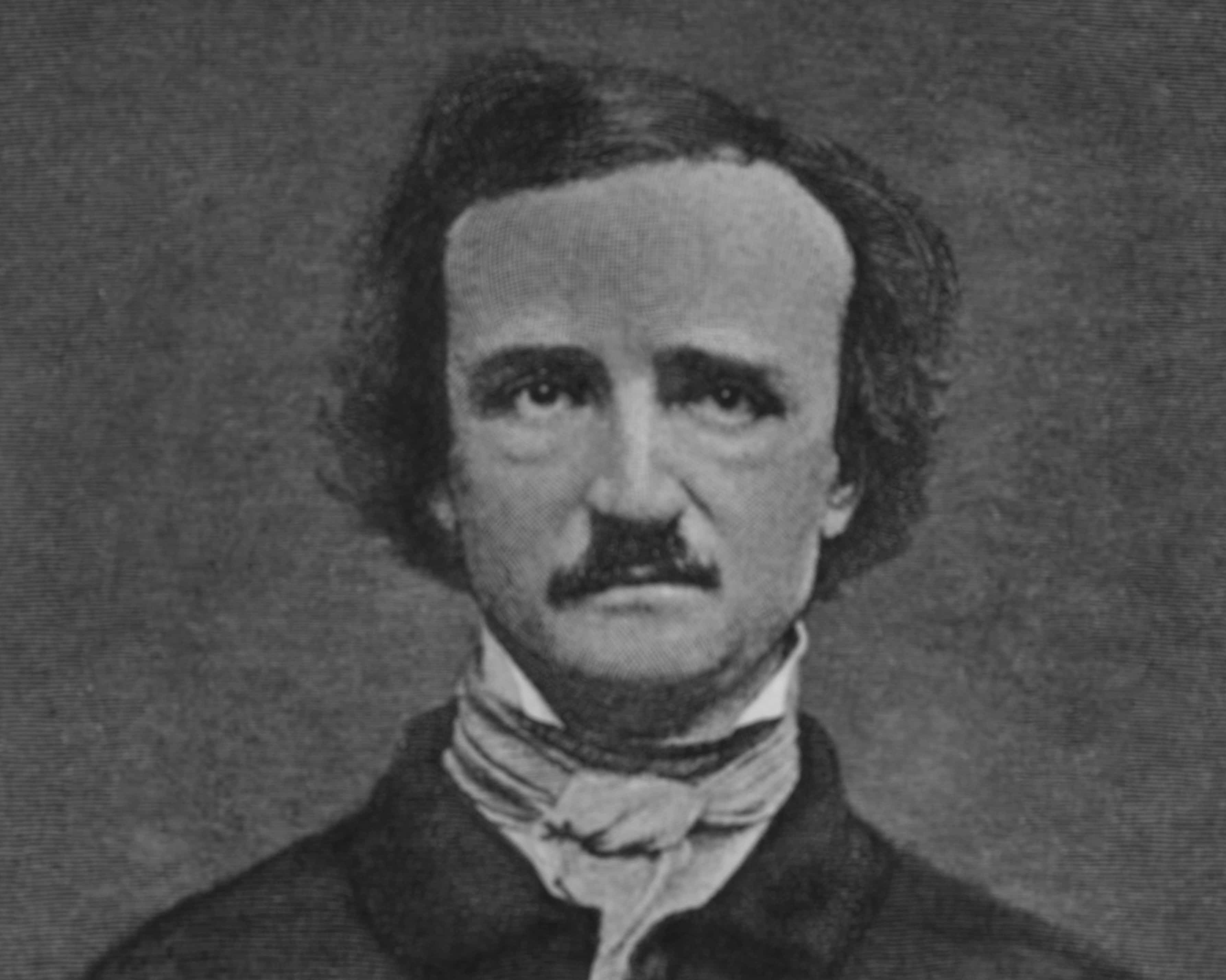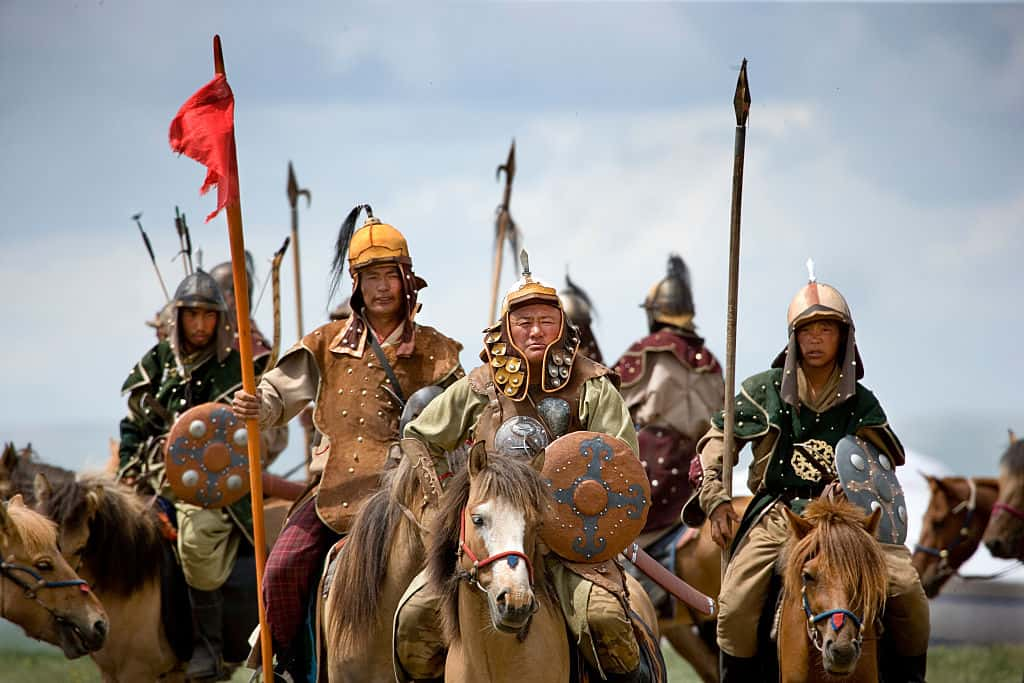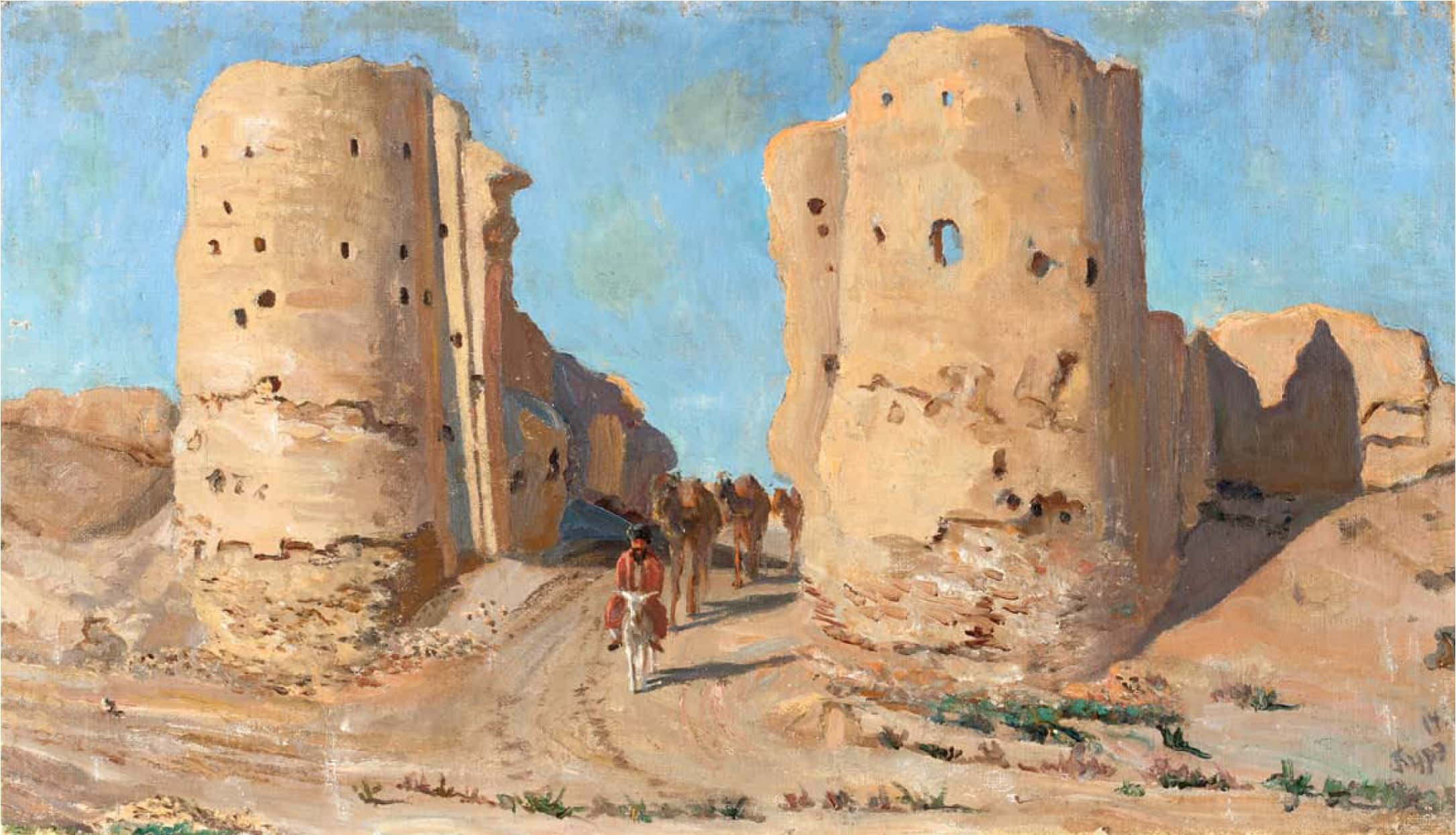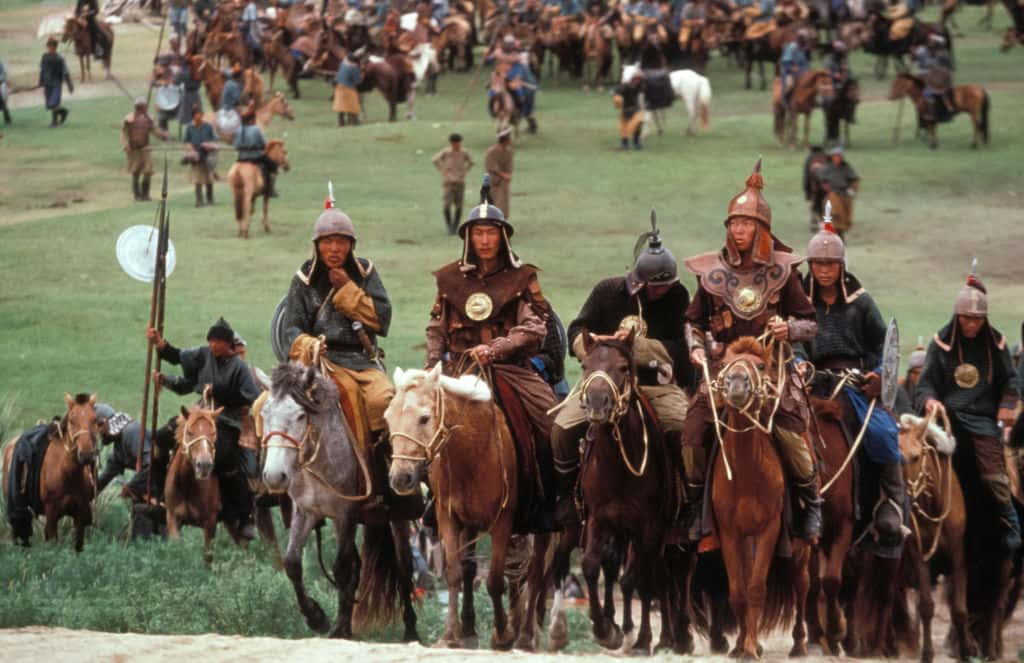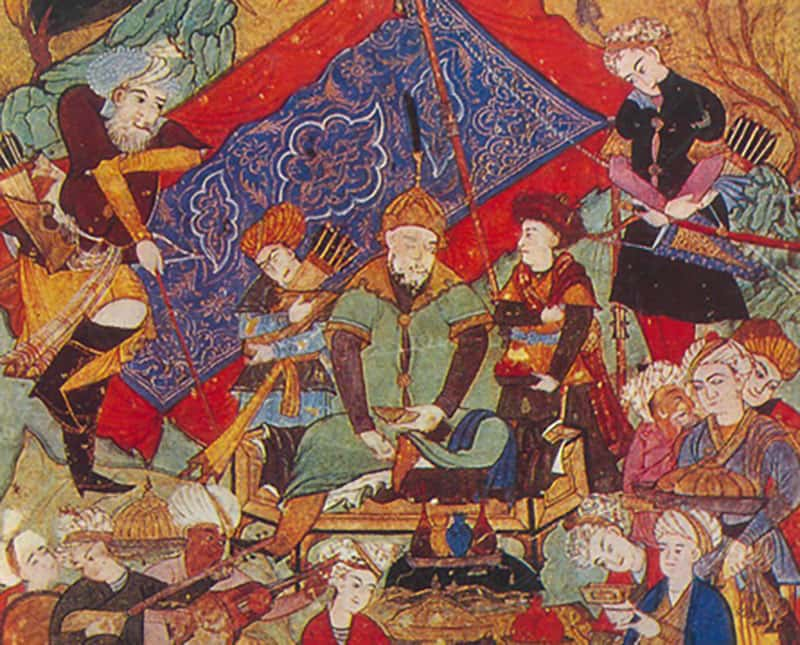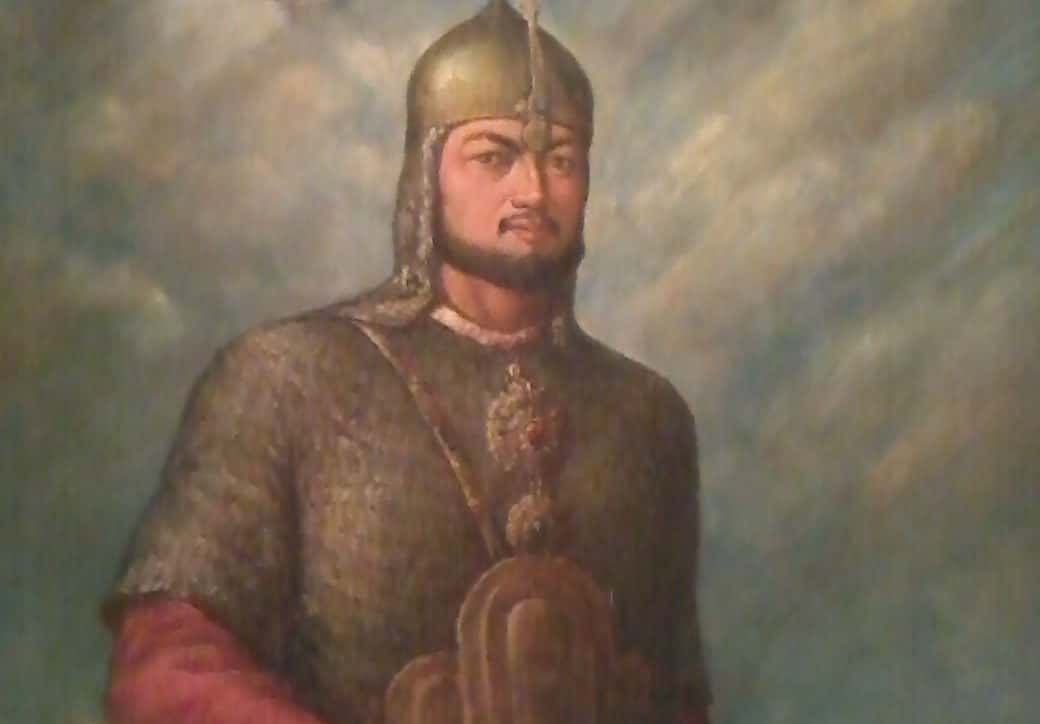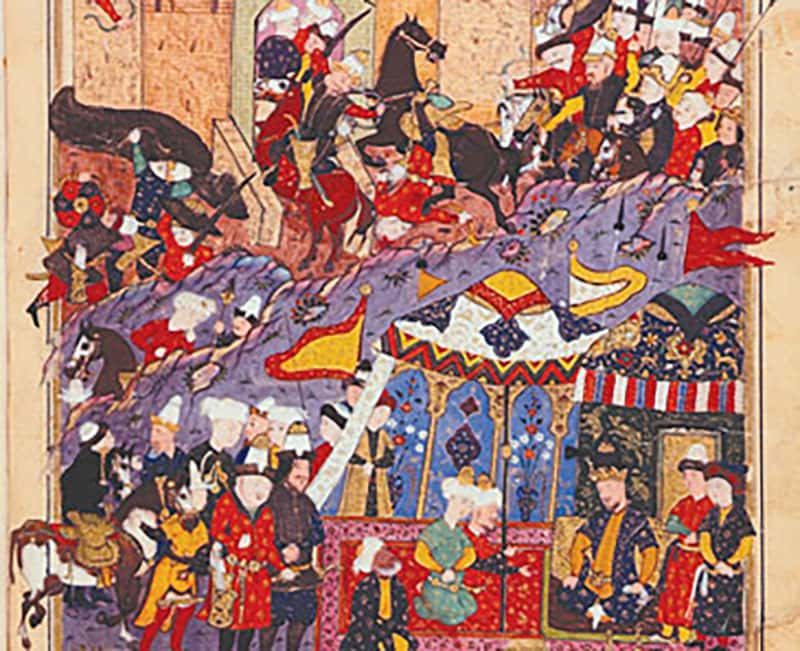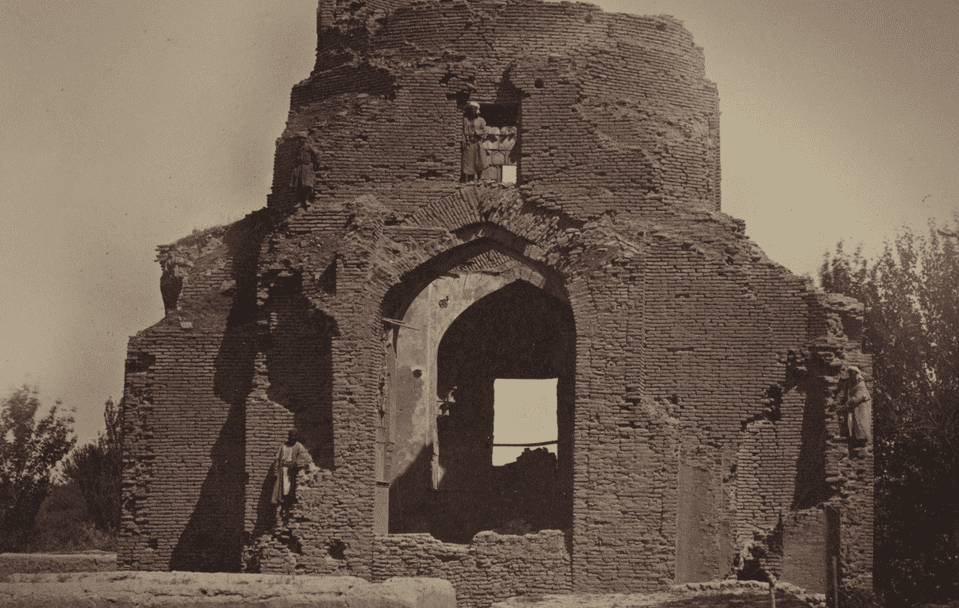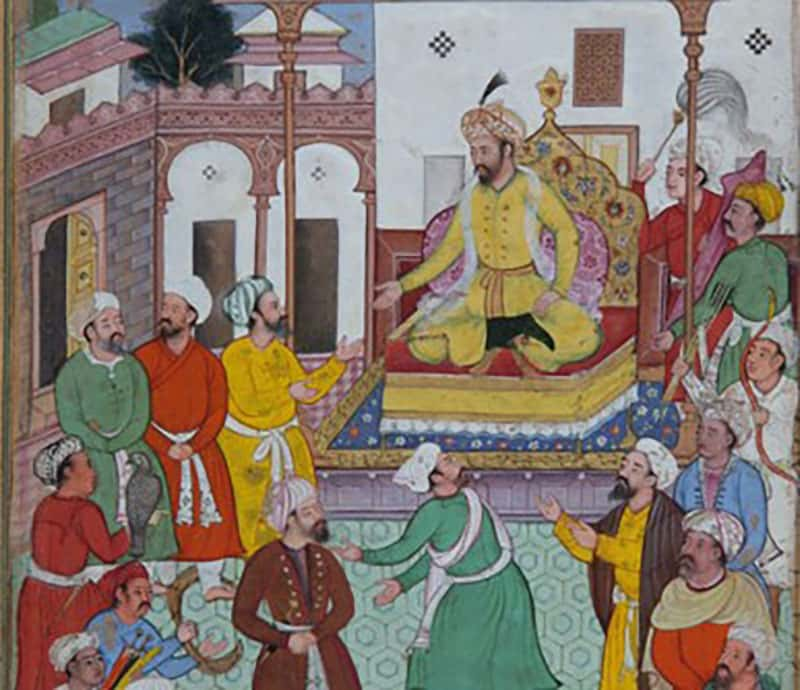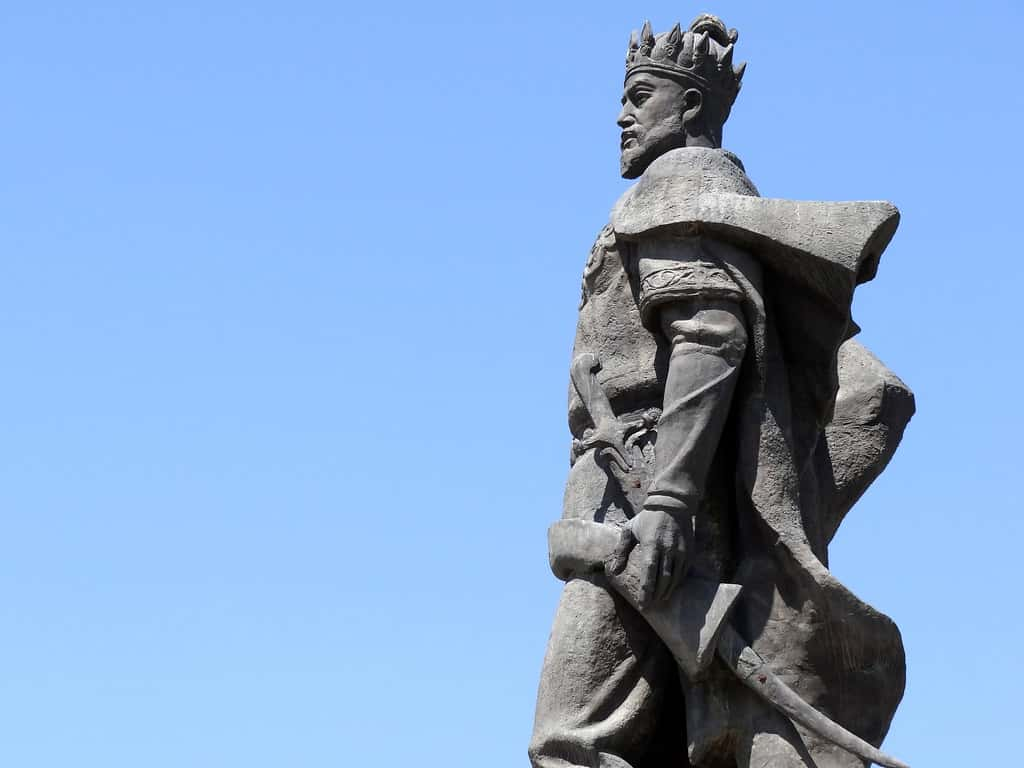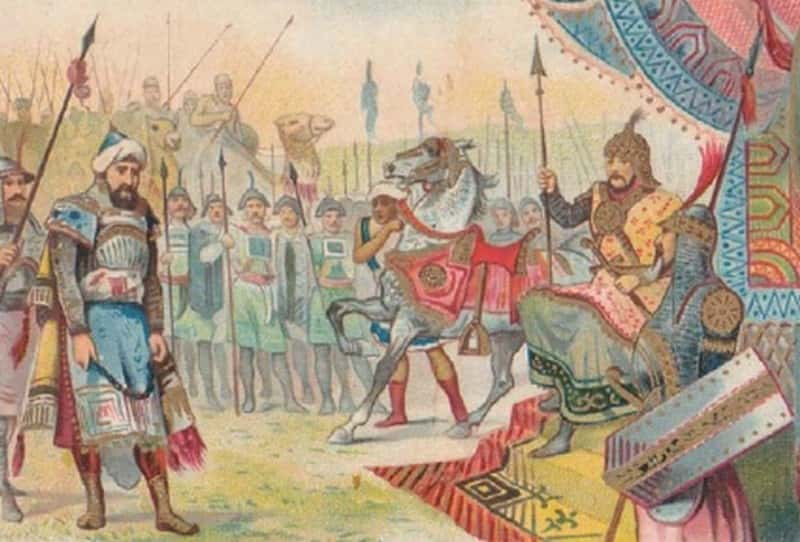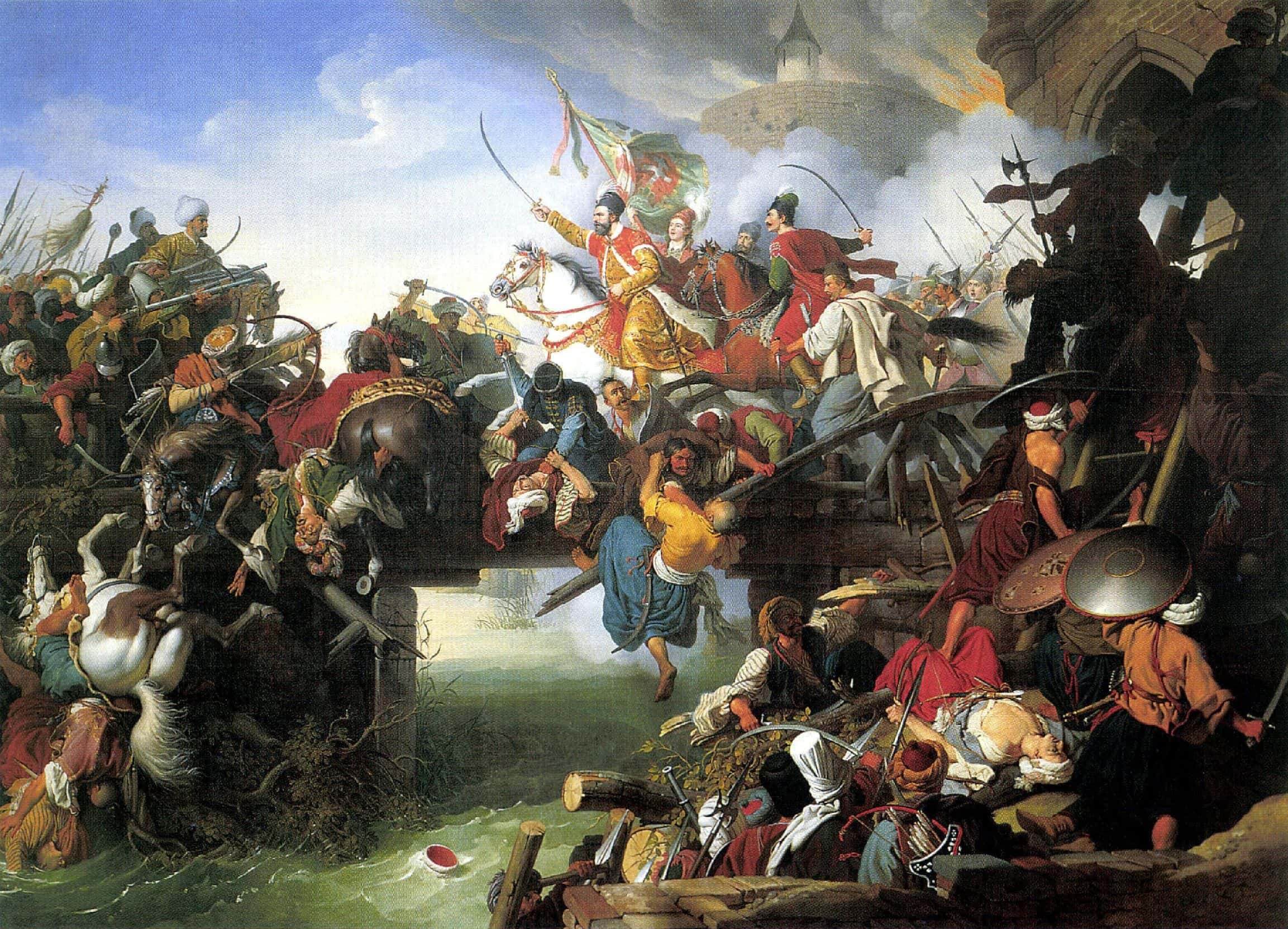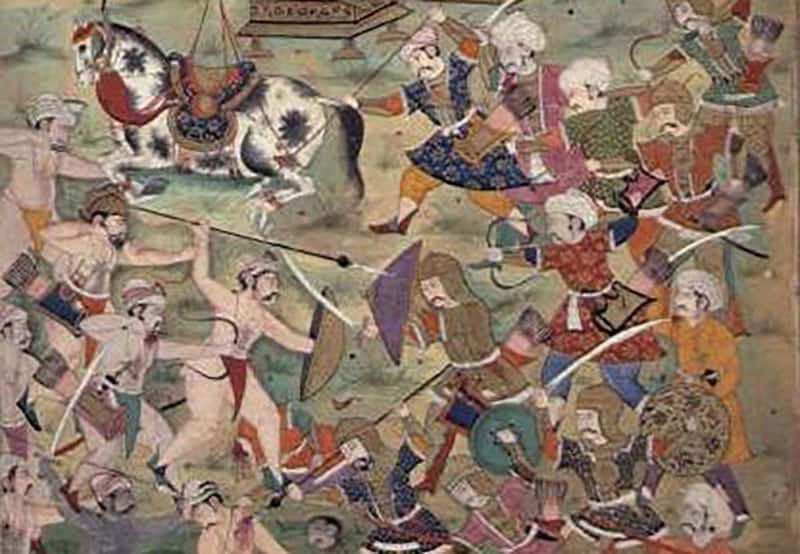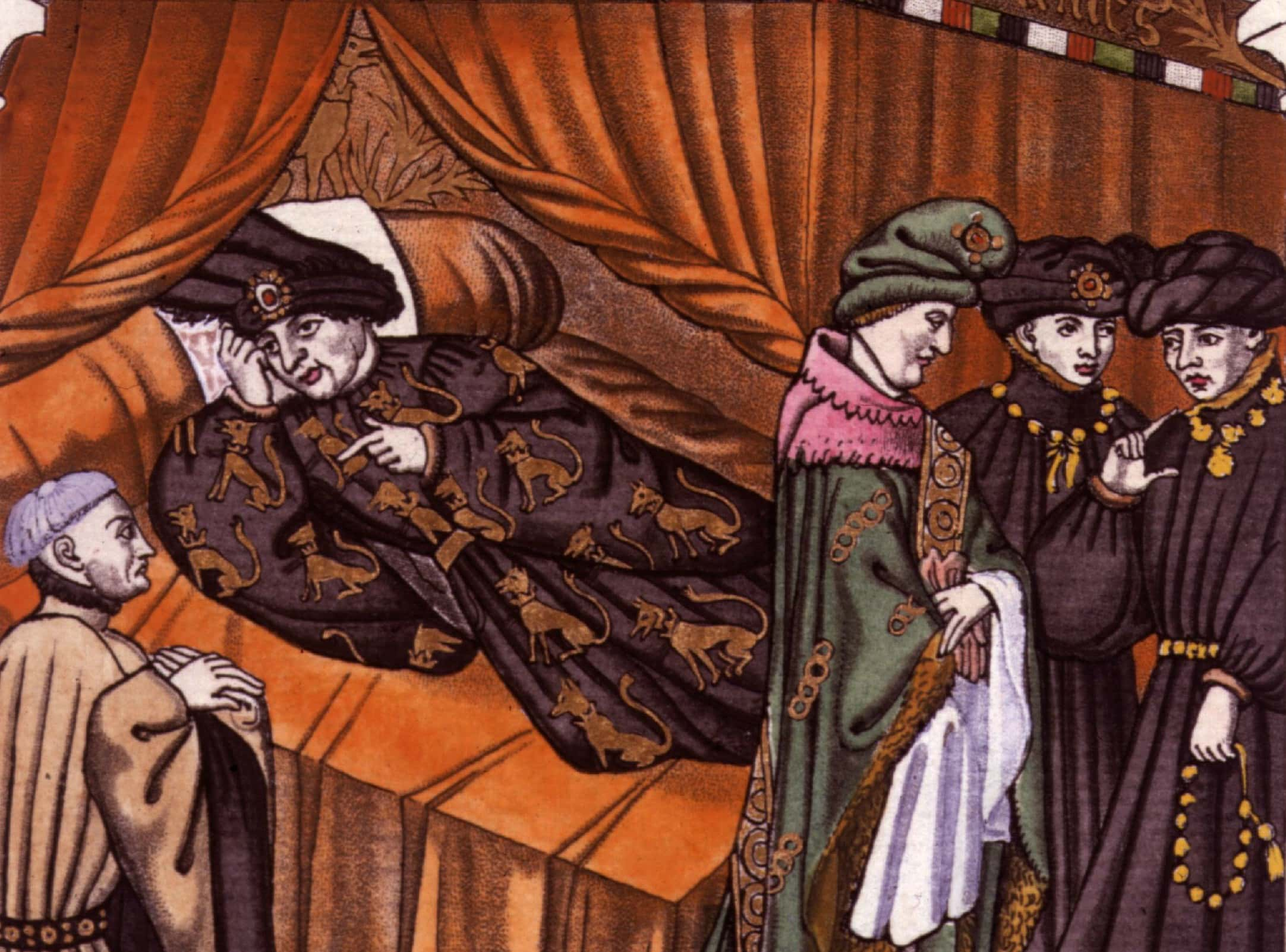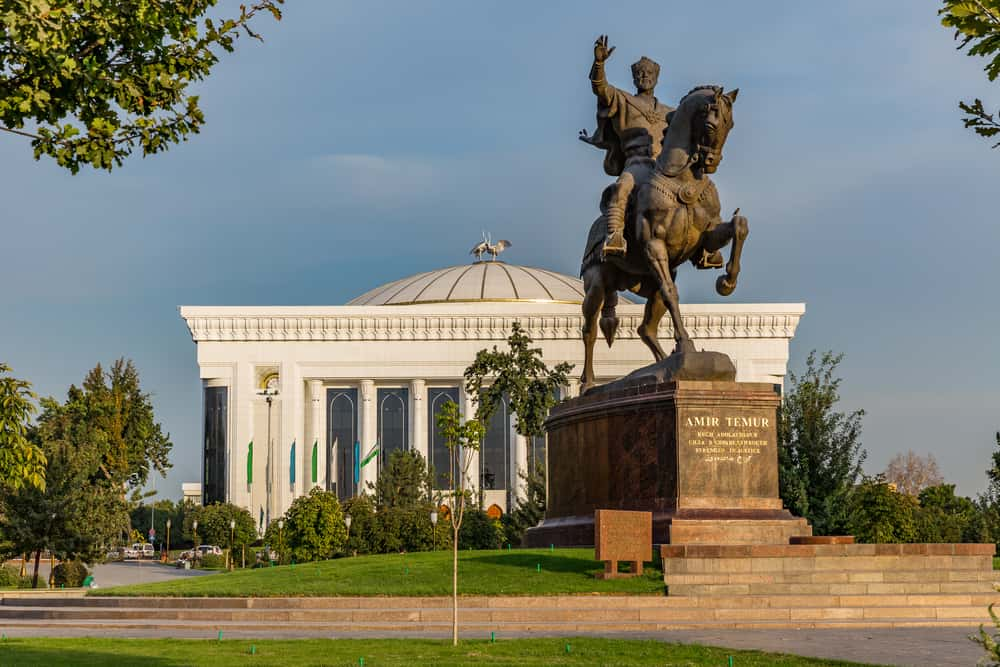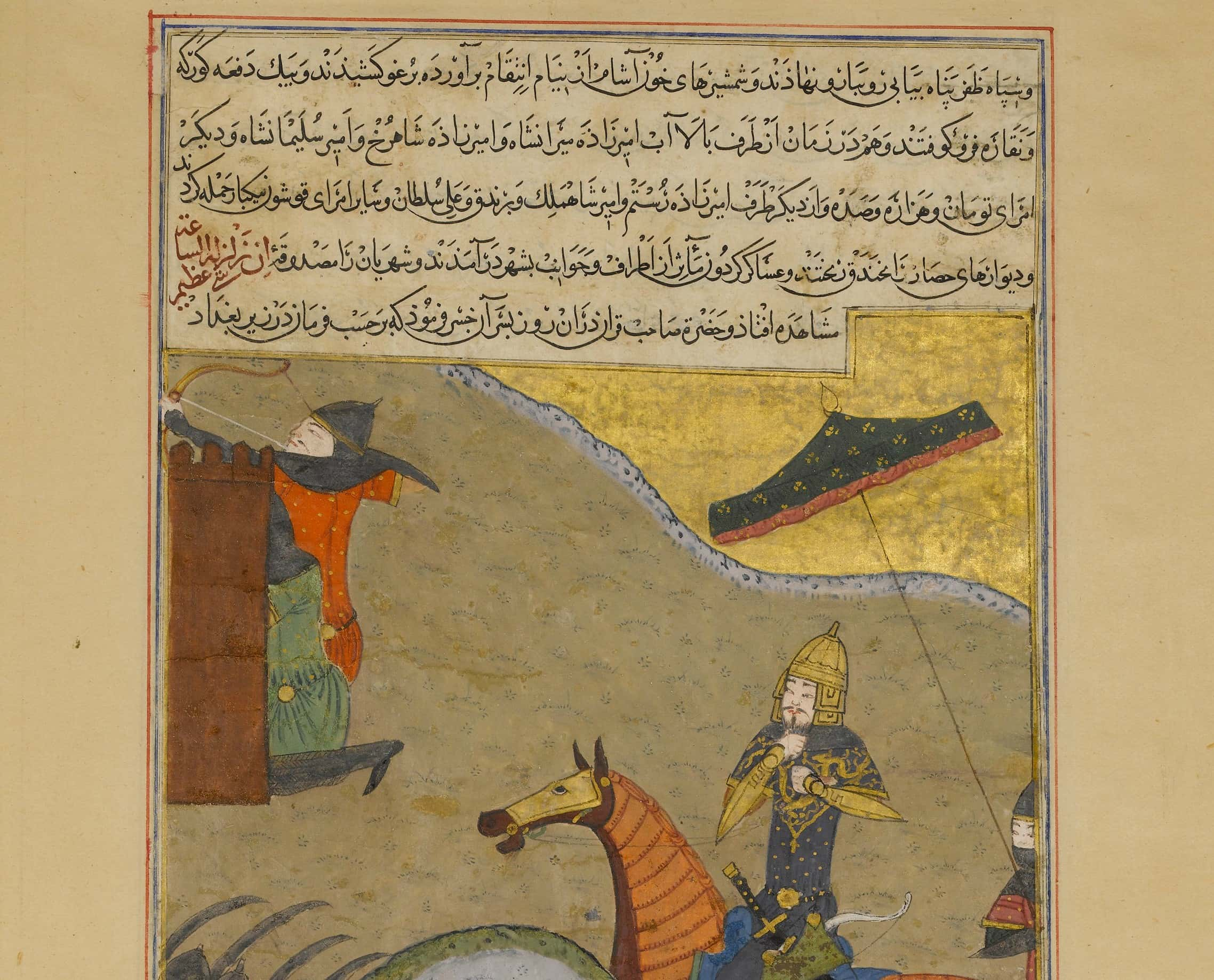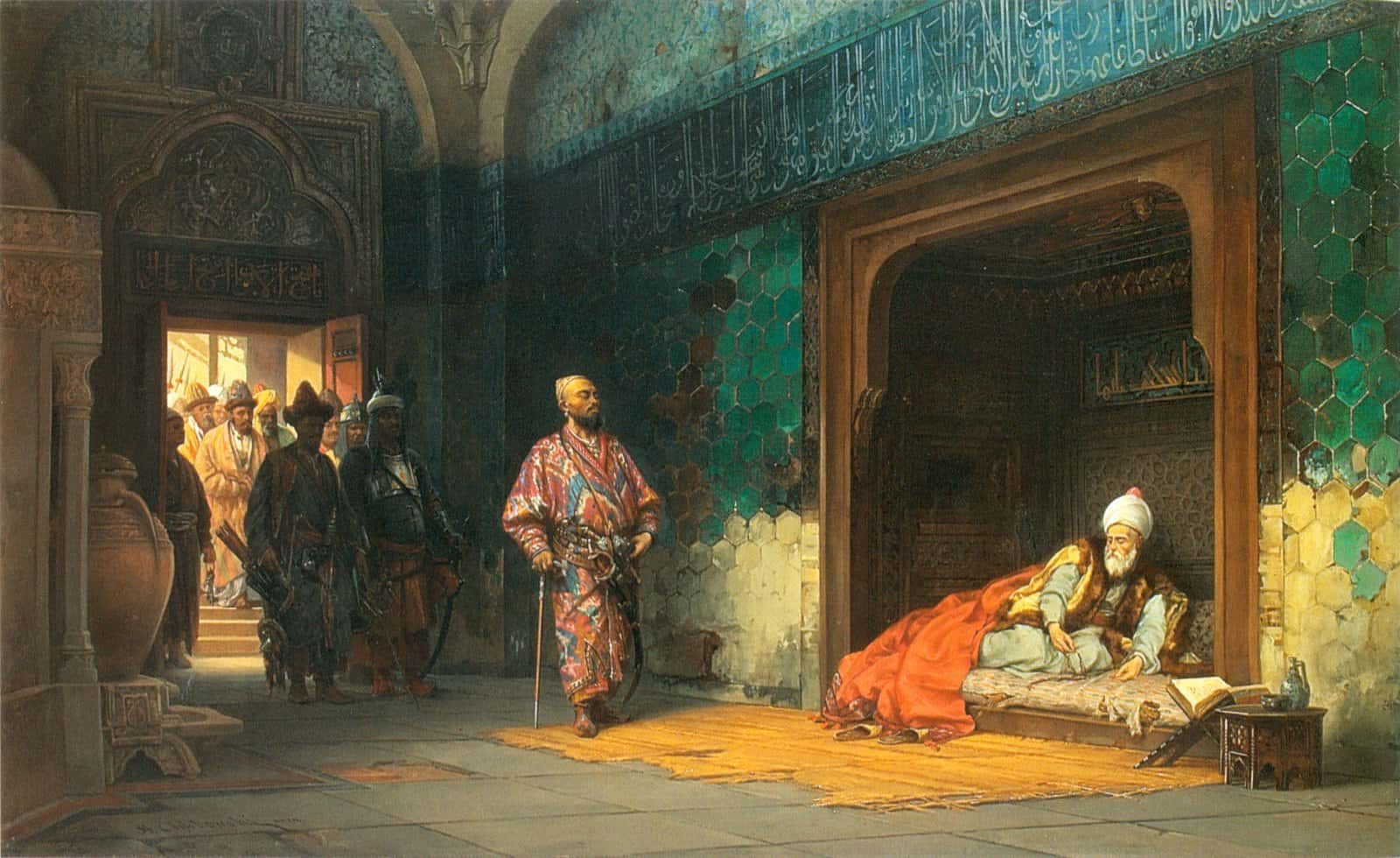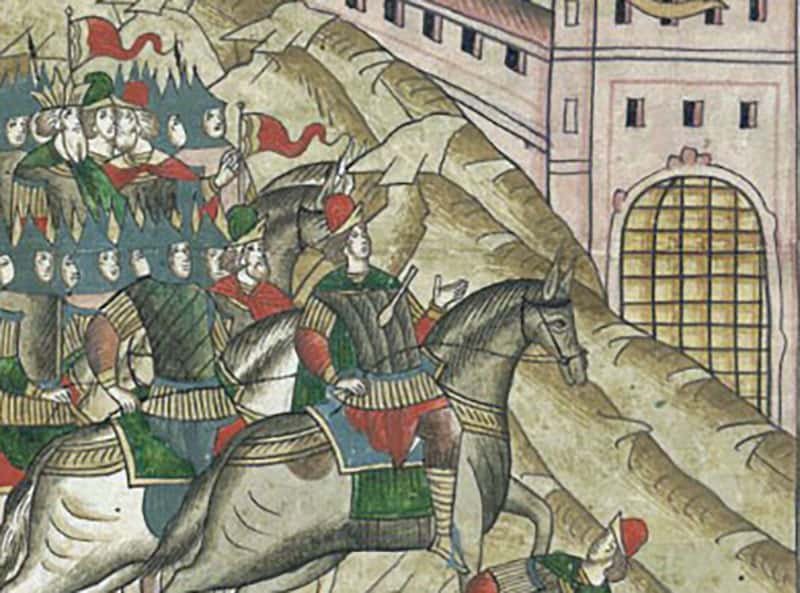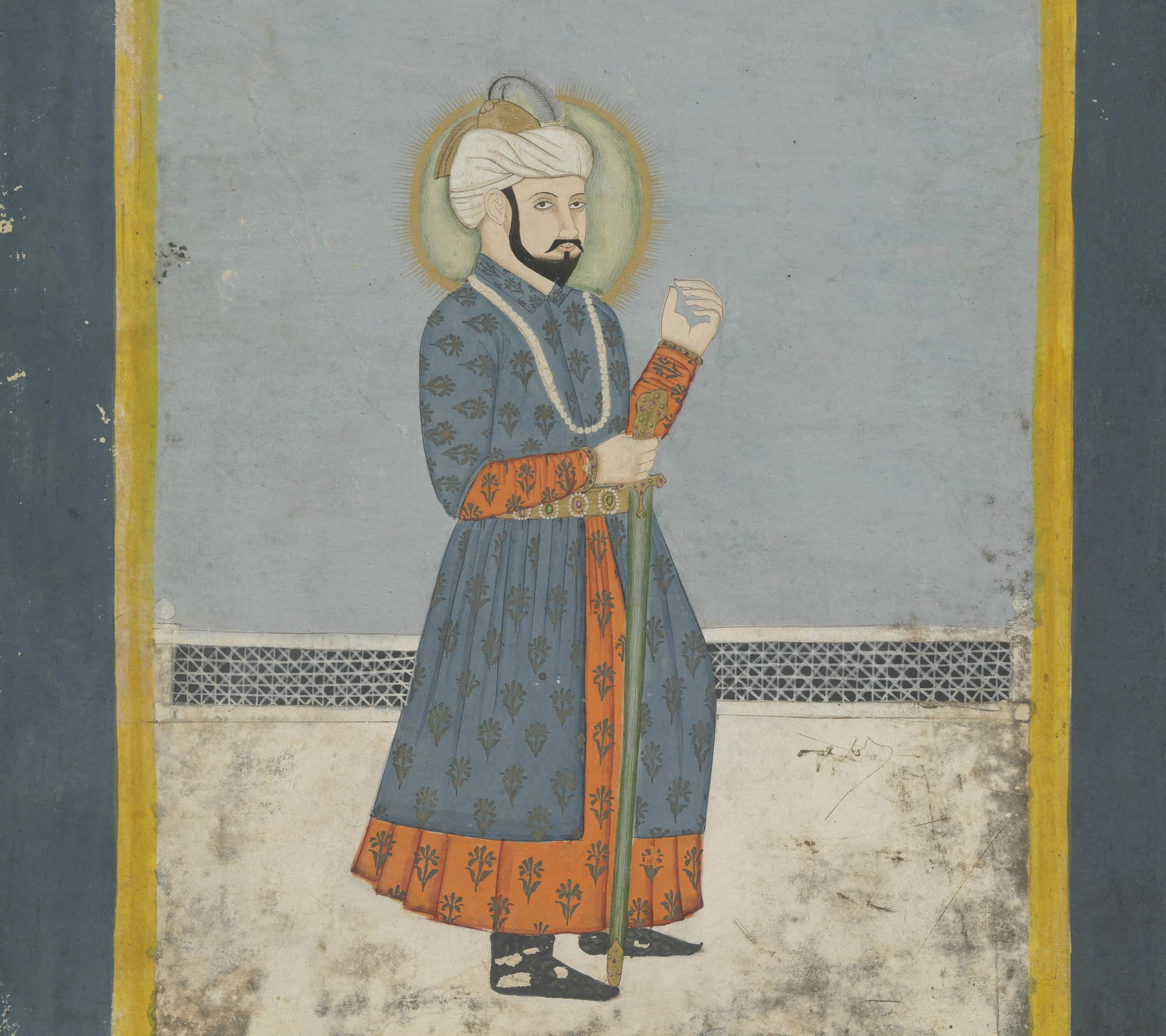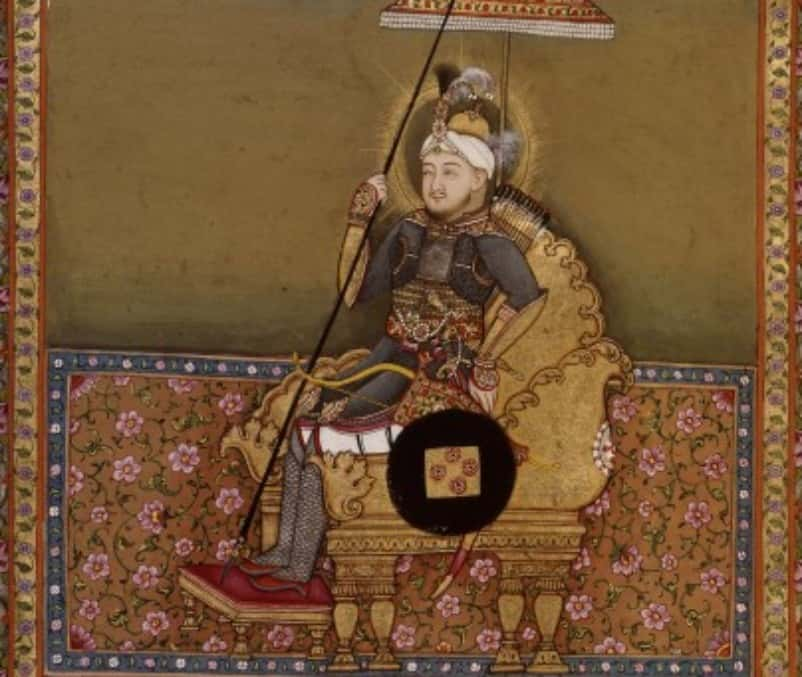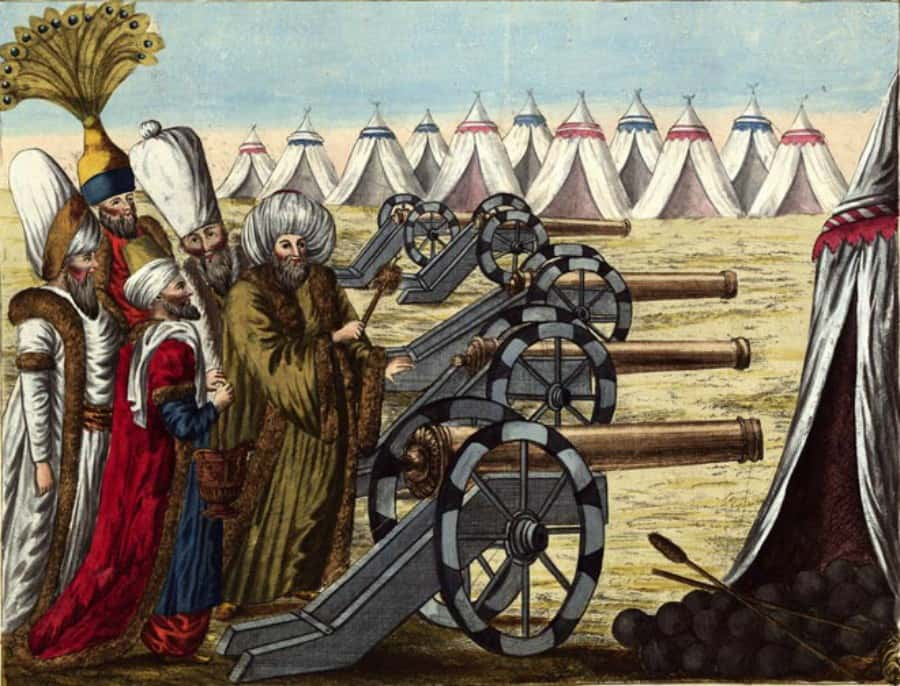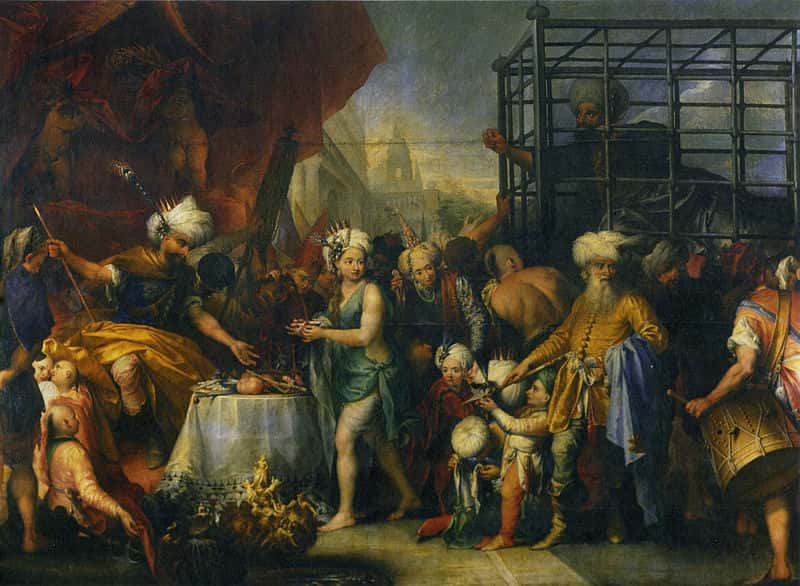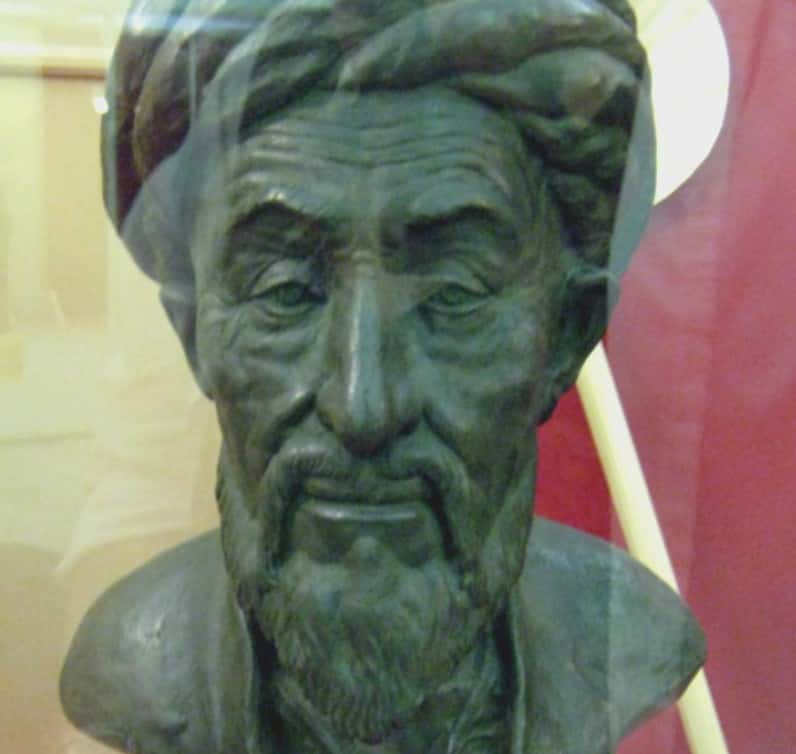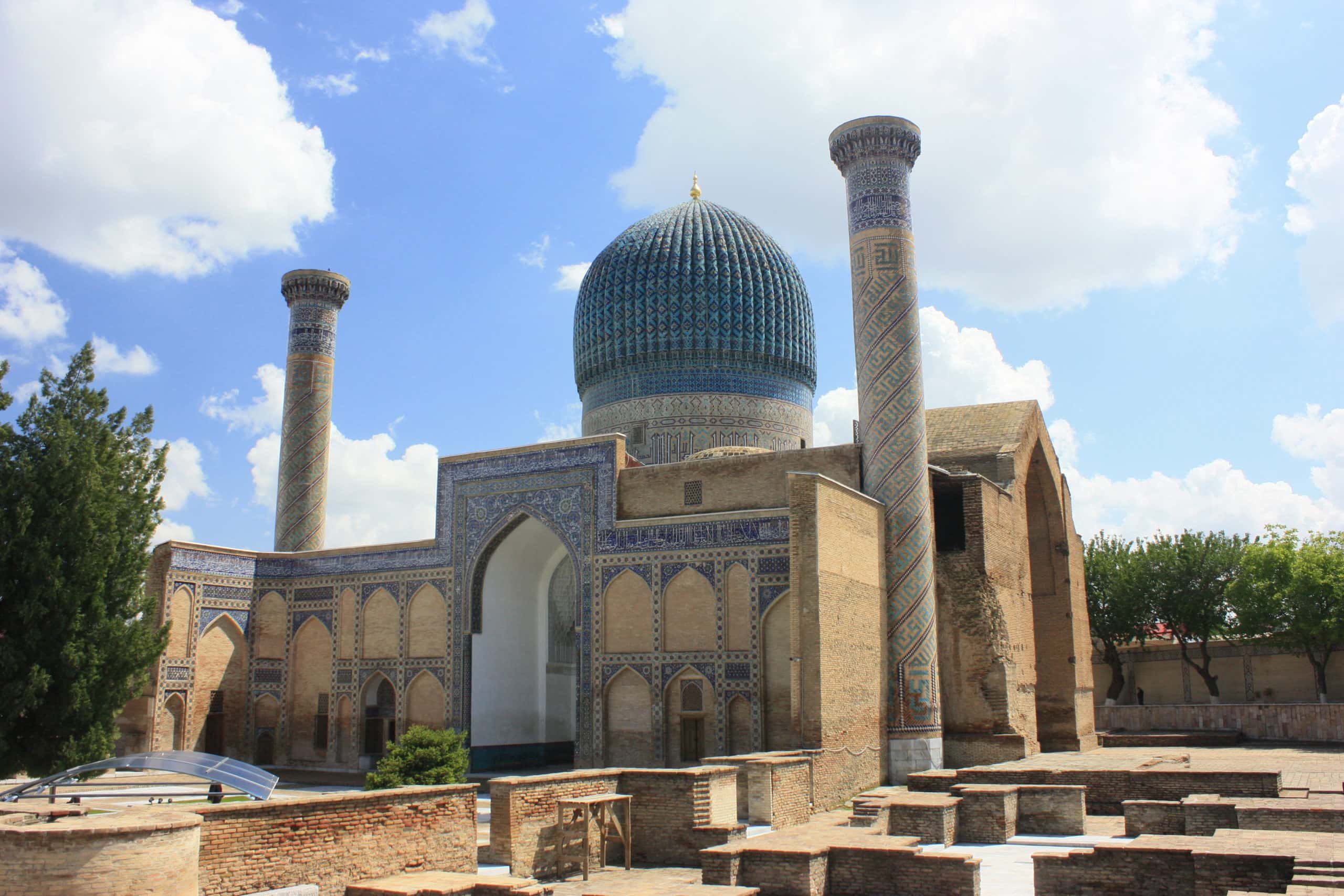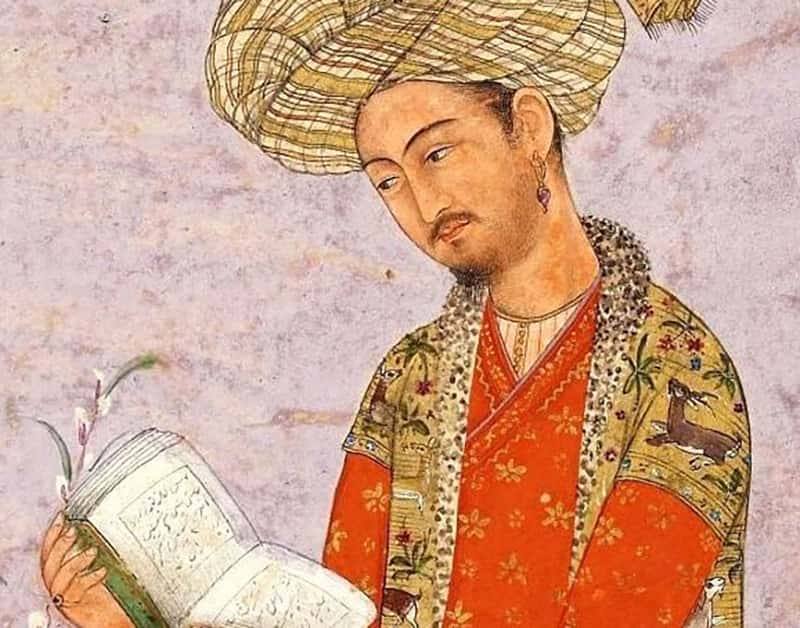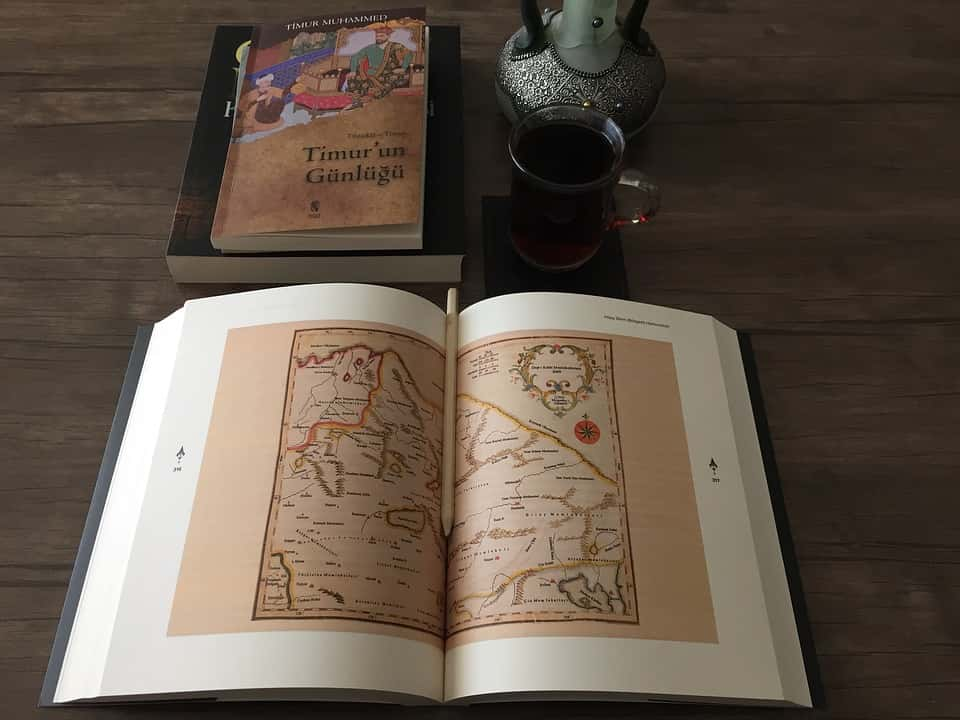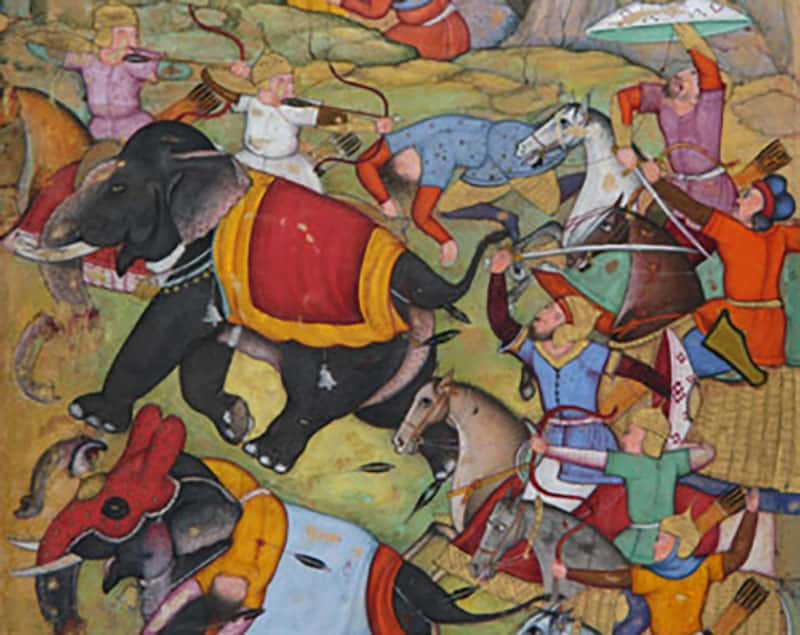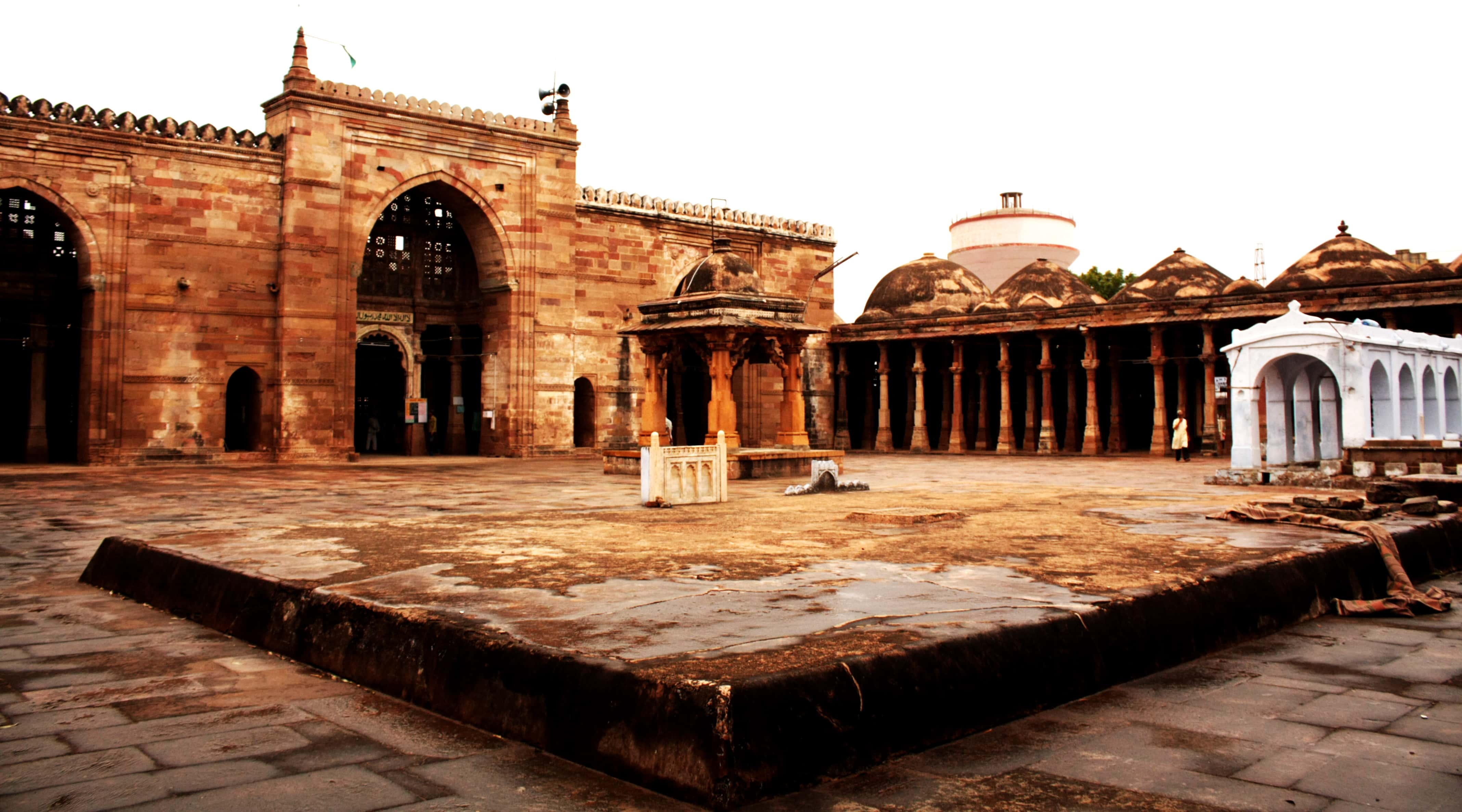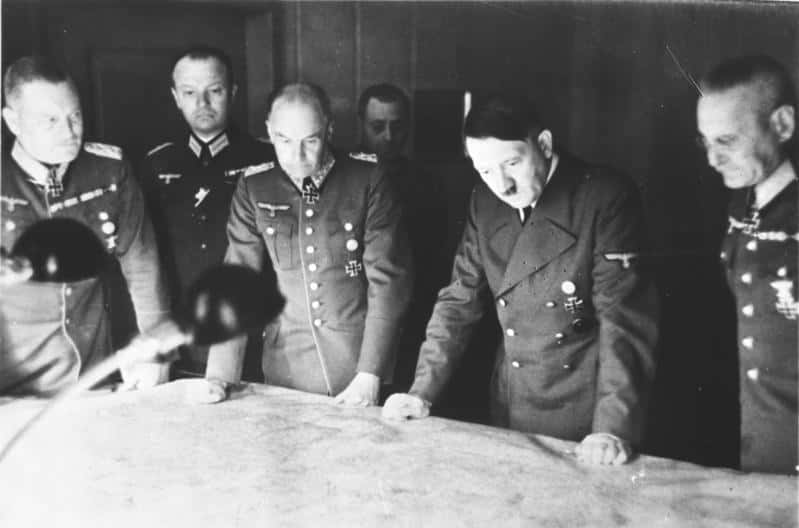History has seen many conquerors and warlords rack up horrific body counts during their lives as they fought to subdue or slay as many people as possible. One of the most terrifying examples of these warlords was a man named Timur. While you’ve probably heard of him through one of his other names, Timur’s impact upon world history is impossible to doubt. If you’re a little behind on the history of Timur’s life and the many barbaric acts he committed, keep reading to find out more.
1. Call me Ishmael. Wait, I Mean…
While he is officially known as Timur (which meant “iron,” in case you were curious), he has been much more well-known by other versions of his name. His name has been spelled as Taimur in the past, while he was also called Amir Timur. The most famous nickname that Western writers have used, however, is Tamerlane.
2. Traumatic Childhood
The name "Tamerlane" stems from what he'd been previously known as: Timur the Lame. Allegedly, when Timur was a young man, he participated in sheep-stealing. The shepherd whom he was robbing happened to be a competent archer, and Timur was badly wounded by two arrows. One arrow pierced his right leg, the other his right hand. Not only did he lose two fingers on his injured hand, but he also walked with a limp for the rest of his life.
3. Welcome to the World
It’s slightly disputed amongst historians when Timur was born, but most sources state that his date of birth was April 8, 1336. He was born in what is now known as Uzbekistan.
4. Mixed-Race Man
Timur had a rather diverse cultural background. His ethnic roots were a blend of Persian, Mongol, and Turkish descent. This stemmed from the fact that the Mongols in western Asia (particularly the Golden Horde) had blended with the Turkish peoples. Timur was also a devout Muslim throughout his life, calling himself “the Sword of Islam.”
5. Everything the Light Touches
At its height, Timur’s empire included Pakistan, Georgia, Uzbekistan, Azerbaijan, Tajikistan, most of Turkey, and Afghanistan. The Timurid Empire, as it was called, was around 1.7 million square miles at its maximum size!
6. Role Model of the Century
Arguably the foremost of Timur’s heroes was the Mongol leader Genghis Khan. Timur considered himself to be the heir to Khan’s legacy, though it’s worth pointing out that he wasn’t a descendant of Khan (though millions of others have been in the past). During his life, Timur sought to reunite the former empire controlled by Khan, restoring it to its former glory (if “glory” is the right word).
7. Artistic Inspirations
Timur wasn’t just well-known in the eastern hemisphere, but also in the western world. English playwright Christopher Marlowe wrote a two-part play about him called Tamburlaine the Great. Two centuries later, Italian composer Antonio Vivaldi composed an opera about Timur’s military exploits. Less than 100 years after that, Timur was the subject of American literary legend Edgar Allan Poe’s first poem, Tamerlane.
8. Long Live the King
As the founding ruler of the Timurid Empire, Timur reigned from April 1370 to February 1405. That’s nearly three times as long as the reign of Alexander the Great!
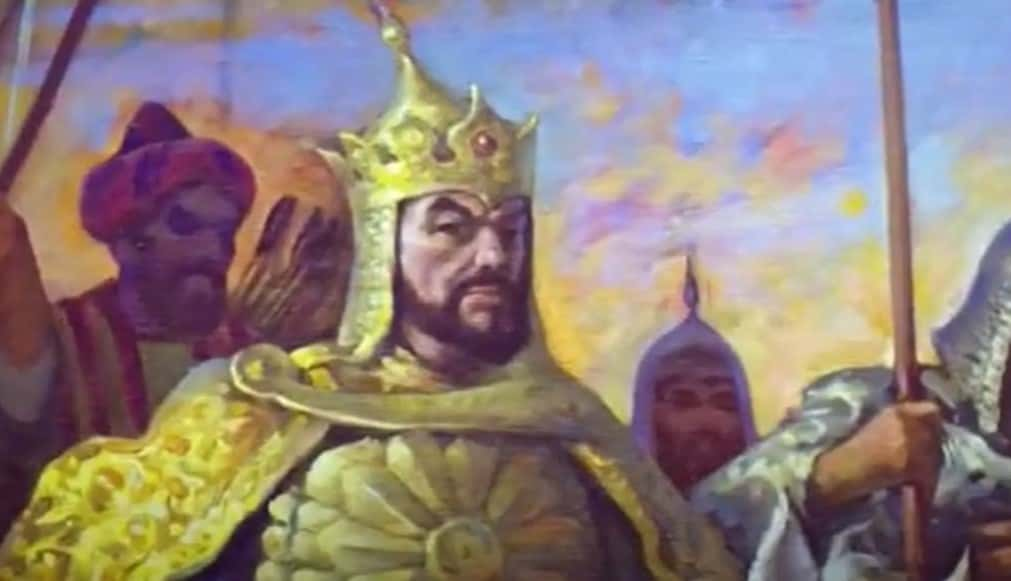 Timur: The Sword of Islam(2019), Viasat History
Timur: The Sword of Islam(2019), Viasat History
9. Share the Spoils? I Think Not!
After Genghis Khan's death, his massive empire was divided amongst his sons and their descendants. These factions (also known as khanates) eventually turned on each other, warring for all kinds of reasons. Timur was eventually dragged into these conflicts, fighting for one khanate or another, and his own prestige grew as a result.

Sign up to our newsletter.
History’s most fascinating stories and darkest secrets, delivered to your inbox daily. Making distraction rewarding since 2017.
10. Anyone Welcome
Not only was Timur a multiethnic man, but so was his army. He didn’t discriminate when it came to his followers, welcoming all kinds of men into his army. However, Timur did push for Islam to be the main religion of his empire and followers.
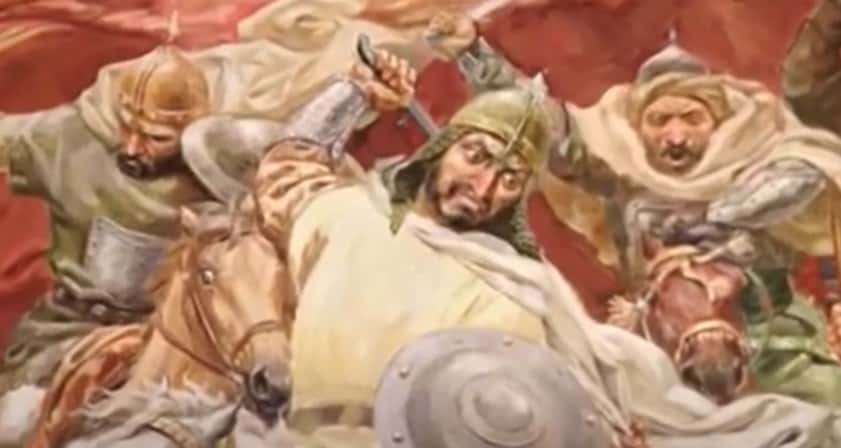 Timur: The Sword of Islam(2019), Viasat History
Timur: The Sword of Islam(2019), Viasat History
11. I’ll Take Over, Thanks
Timur’s rise to power really began after he’d established himself as a highly skilled military leader. He allied himself closely to the khans of the Chagatai Khanate, which consisted of about 1.4 million square miles in central Asia. Eventually, his military prowess and following became such that Timur reduced the Chagatai khans to being figurehead rulers while he was the one really running things.
12. This is Classist!
Despite forming a significant empire in his lifetime, and despite his claims to be resurrecting the legacy of Genghis Khan, Timur never used the title Khan to describe himself. It was considered improper because not only was he only partly Mongolian, he wasn’t descended from the Great Khan.
13. Ladies’ Man
Like so many conquerors and rulers in human history, Timur was known to have had many women in his life. He allegedly had at least 43 wives, consorts, and concubines during his lifetime.
14. So his Last Name was Mirza?
From these many women, Timur was known to have five daughters (Aka Begi, Sultan Bakht Begum, Sa’adat Sultan, Bikijan, and Qutlugh Sultan Agha) and four sons (Umar Shaikh Mirza, Jahangir Mirza, Miran Shah Mirza, and Shah Rukh Mirza). Timur’s sons would all beget dozens of children of their own as well, leading to what we can only assume was a crowded family reunion on every holiday!
15. For Old Time’s Sake?
Early on in Timur’s military career, one of his allies and companions was Amir Husayn, who was also his brother-in-law. However, this friendship soon devolved into bitter rivalry as they increased their power and wealth. The deciding factor proved to be the loyalty of the people. Timur was generous to his followers, which increased his popularity on nearly all fronts. Husayn, meanwhile, was seen as selfish for his heavy taxes imposed on his territory and using the money for elaborate architecture.
Husayn’s power base dwindled eventually and he threw himself upon the mercy of Timur.
16. No Room for Sentimentality
If Amir Husayn ever thought that Timur might remember the good old days and be lenient to his fallen rival, he was sadly mistaken. Timur had Husayn murdered soon after his surrender, even as he took Husayn’s former wife for himself. It’s worth pointing out that this wife in question was Saray Mulk Khanum, one of Genghis Khan’s descendants. This marriage gave Timur the chance to legitimately take the Chagatai Khanate for himself.
17. Big Brain
Despite his savage treatment of various cultures and empires, Timur surrounded himself with scholars and learned men. It was through their help that Timur learned how to speak Persian, Turkish, and Mongolian. Not only did Timur respect and patronize intellectuals, but he was also said to be an intelligent man himself, even besides his genius for warfare.
18. What’s Up, Shorty?
According to an examination of Timur’s corpse (more on that excavation later), the conqueror was quite tall, at least for his time. He seems to have stood around 1.73 meters (or just under 5’9"). Of course, nowadays that’s quite an average height.
19. Ottoman Offensive
At the end of the 14th century, Timur led a massive campaign against the Ottoman Empire after a dispute between himself and Sultan Bayezid I over territory in Anatolia. The first regions of the empire to face Timur’s wrath were the predominantly Christian regions of Armenia and Georgia. Aside from the people killed, Timur enslaved more than 60,000 of their citizens.
20. Dubious Friend
You might think that the populations of Europe would have despised Timur for his actions against their fellow Christians in the Middle East. However, Europeans were initially quite favorable towards Timur. The reason for this was that the Ottoman Empire was an ancient enemy of the west, and since Timur was attacking the Ottomans, that automatically made him an ally. While European opinions would be more and more divided against Timur as time wore on, it really does say a lot about the strength of humanity’s cognitive dissonance.
21. This is Getting Confusing
It’s worth pointing out that during Timur’s invasion of the Ottoman Empire, various Italian factions actually sided with the Ottomans against him. The people of Genoa and Venice provided ships to ferry Ottoman armies against Timur, much to Timur’s fury. Their rationale for helping the Ottomans after years of fighting them was that at least they knew where they stood with the Ottomans, while Timur was a wild card and clearly a more dangerous opponent. Once again, cognitive dissonance prevails!
22. Mon Ami
In the beginning of the 15th century, Timur sent envoys and letters to King Charles VI of France, seeking an alliance. This wasn’t completely without precedent; the French Crusaders had attempted alliances with the Mongols to unite against their mutual Islamic enemies. Now, of course, Timur was descended from Islamic Turks and Mongols, but he still sought allegiance with the French king. However, diplomacy never got far before Timur’s death. It was probably for the best, given the madness of Charles VI.
23. One of Us!
Despite his bloody legacy, the nation of Uzbekistan still considers Timur to be a national hero of theirs to this day. They even erected a statue of Timur within their capital city of Tashkent.
24. Maybe He Forgot to Turn Off the Oven?
One of the most famous traditions associated with Timur within the Russian Orthodox Church took place in 1395. Timur marched upon Russia with his army. Along with his own army, Great Prince Vasily I of Moscow brought the sacred icon called Theotokos of Vladimir. As the Russians marched to the Oka River, they prayed fervently to the icon, begging God to watch over them. Much to everyone’s surprise, Timur and his forces ended up retreating for unknown reasons.
The Russians would celebrate this miracle for many years afterward.
25. Legacy in Literature
During his own lifetime, Timur was the subject of two biographies which exist to this day. Nizam ad-Din Shami was a historian who wrote the first of these two biographies, titled Zafarnama, while the second was written by Arab writer Ahmad ibn Arabshah. While Shami’s account was highly favorable towards Timur, Arabshah’s writing was a scathing indictment.
26. Good Cop or Bad Cop?
After defeating the Ottomans several times (especially at the Battle of Ankara in 1402), Sultan Bayezid I was captured by Timur. There is a lot of division on what exactly happened to the captured sultan. According to the writers from Timur’s court, Timur treated his captive with courtesy and even mourned when Bayezid I died, still imprisoned, in 1403. Other writers, meanwhile, claim that Timur subjected Bayezid to much cruelty.
Whether it’s true or not, one could definitely believe it based on how Timur usually dealt with his enemies.
27. But What’s the Capital of Assyria?
Prior to Timur, there was a branch of Christianity known as the Church of the East. This branch of Christianity thrived in the Middle East and Persia until the time of Timur’s conquests. His actions virtually wiped out the Church of the East until it was limited to that area known as the Assyrian Triangle.
28. Timurid Intervention
Beginning in the 1370s, Timur became involved with the politics of the Golden Horde, one of the khanates formerly part of Genghis Khan’s empire. At this point, the Horde had divided into two factions led by Tokhtamysh and his uncle, Urus Khan. Timur sided with Tokhtamysh and helped the man defeat Urus Khan and unite the Golden Horde behind his banner.
29. When Two Hunters Go After the Same Prey…
Unfortunately, despite Timur being the reason for his victory in reuniting the Golden Horde, Tokhtamysh forgot his gratitude in favor of his ambition when the Ilkhanid Dynasty in Persia ended abruptly. In the 1380s, both Timur and Tokhtamysh invaded, seizing new territory for themselves. By 1389 or 1391, the former allies became bitter enemies. Their first serious conflict was the Battle of the Kondurcha River in 1391, resulting in a victory for Timur.
30. River War
Despite Timur’s victory at the Kondurcha River, his enemy wasn’t defeated. Tokhtamysh spent the next few years rallying the Golden Horde and returning to a position of strength. This led to the Battle of the Terek River in 1395. While the battle was evenly matched at first, several emirs of the Golden Horde defected to Timur’s side, and this helped him overrun Tokhtamysh’s left flank. The battle became a rout, and Timur celebrated by razing several cities along the Volga River.
As for Tokhtamysh, he survived the war, but he went from bad to worse until his death in 1406. The Golden Horde splintered, and never recovered from their defeat in their war against Timur.
31. More Elitism?!
Just like when he tried to claim the title of Khan, Timur was unable to take the Islamic title of Caliph as would be befitting a Muslim conqueror. The title of Caliph was limited to people who belonged to the tribe of Muhammad (known as the Quraysh). Perhaps in frustration at being shut out of yet another prestigious title, Timur constructed a myth which put him in the position of a chosen one favored by Allah.
His success on the battlefield was a more practical piece of evidence that he used to back up his claim.
32. Gone with a Bang
Timur was the last of the great nomadic conquerors in the eastern hemisphere. After him, history would give way to the Gunpowder Empires, changing the battlefields of Asia forever. We’d like to say things got less violent during this time, but any history book will prove that hope quite incorrect.
33. Steeped in Blood
It’s impossible to determine just how many people lost their lives because of Timur’s conquests, but it’s been estimated that the number is around 17 million. At the time, that was around 5% of the world’s human population!
34. Died With his Boots Off
After all the brutal violence which Timur was involved with during his life, it’s almost anticlimactic to point out that he was killed by disease. In the winter of 1404 and 1405, the aging warlord went against his personal habits and launched a military campaign against Ming China during the winter season rather than waiting until spring. Timur never made it to China, however, as he succumbed to illness on his way to the border.
He was 68 years old when he died on the 19th of February 1405.
35. To the Strongest
Because Timur had outlived his eldest sons, there was a question over heirs and who would inherit the Timurid Empire. Naturally, Timur’s choice was challenged by a dozen other princes eager to sit the throne. After a few years of strife, Timur’s youngest son, Shah Rukh, became the ruler of the empire.
36. Delayed Autopsy
Timur’s tomb was exhumed on June 19, 1941, by a team of Soviet anthropologists, chief among them being Mikhail M. Gerasimov. Their examination of Timur’s skeleton confirmed that he not only had a lame leg, but also an emaciated right arm.
37. The Apple Didn’t Fall Far
One of Timur’s most famous descendants was his great-great-great-grandson Babur. In case you’re not familiar with that name, Babur was the founder of the Mughal Empire, which ruled the Indian subcontinent and other parts of Asia for more than three centuries.
38. Judged Harshly for a Good Reason
Speaking of divisive opinions, Muslim scholars have long been divided over Timur’s reputation depending on where said scholars come from. Central Asian writers, living in the region which most benefitted from Timur’s rule, are still highly favorable of his life. The same cannot be said for Indian, Arab, Persian, and Iraqi historians, who tend to consider him a cruel and brutal warlord.
We’re not so surprised, given how many of those regions lost whole cities to Timur’s wrath.
39. I am the God of Hellfire!
Near the end of the 14th century, the aging Timur attacked the Sultanate of Delhi by invading northern India. Sultan Nasir-ud-Din Mahmud Shah Tughluq of the Tughlaq Dynasty wasn’t going down with a fight, however. Marching to Delhi, Timur found out that his forces were going to face the Sultan’s army, and it included many armored elephants. Timur planned accordingly, however. Facing those elephants were a line of camels who carried loads of wood and hay.
Timur’s soldiers set those loads on fire, prompting the camels to charge forward and panic the elephants. These elephants then turned around and ran willy-nilly, creating devastating casualties amongst their own followers.
40. Keep Your Ruin
Following his conquest of the ancient city of Delhi, Timur took control and brought the hammer down. The city was ransacked, plundered, and destroyed. Timur ordered 100,000 captives to be executed. When the city’s inhabitants tried to rise up against their new overlords, Timur made piles of heads and body parts. The city of Delhi didn’t fully recover from this devastation for nearly 100 years.
41. The Curse of Timur
One of the most haunting stories surrounding Timur actually took place long after his death. When his tomb was exhumed, an inscription was allegedly found within his casket. The inscription read, “Whomsoever opens my tomb shall unleash an invader more terrible than I.” Three days after the exhumation of Timur’s tomb began, Adolf Hitler initiated Operation Barbarossa, the largest military invasion in human history.
42. What a Coincidence!
You might be amazed at that coincidence, but you’ll also remember that Adolf Hitler wasn’t just waiting for a curse to be called upon the Soviet Union before he invaded them. So of course, you’ll dismiss the evidence of Timur’s curse as a massive coincidence. However, there’s another aspect to this curse which people tend to forget. In November 1942, Timur’s body was reburied with full Islamic ritual.
Soon after, the tide turned within the Soviet Union, with the Battle of Stalingrad marking the downfall of the Nazi invasion. Was that a coincidence too?
43. Pound of Flesh, Indeed
One of the ghastliest moments in Timur’s military conquests was the destruction of Baghdad during his war with the Ottoman Empire. In the late spring of 1401, the city of 20,000 was captured by Timur, who commanded that each of his soldiers bring back two severed heads. Presumably worried about coming back empty-handed, Timur’s soldiers panicked when they ran out of enemies to behead, so they made up for the shortage by beheading prisoners that they’d already taken.
Some soldiers even beheaded their own wives for fear of short-changing Timur.


